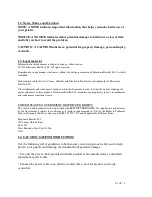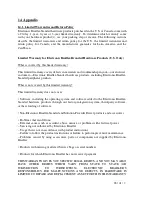
4 | of
1 8
1. Introduction
Electronic Brailler has developed a new concept intended to teach blind
children Braille.
You can skip this introduction and proceed to the Ebrailler Cosmo Keyboard;
we will not be insulted if you just want to get started.
1.1. The teaching and use of Braille in North America.
In the United States and Canada, during the mid1980’s and 1990’s when the voice
synthesizer was developed to be used with a computer and text to speech software
applications also came into development, many agencies and schools responsible for the
education of blind children decided Braille was dead. For a period of approximately ten
years Braille was not taught to blind children as it had been in years prior. Braille books
were expensive and difficult to obtain, the requirements for teachers who specialized in
education of blind students were relaxed. Most education degree programs no longer
required educators for the blind to learn Braille. The result was a generation of blind
people who did not read Braille. It has been researched and proven; blind adults are more
successful when they know Braille. Seventy percent of blind adults are currently
unemployed. Of the 30% who are employed 97% are Braille users. This fact has been
researched by the National Federation of the Blind, The American Council of the Blind,
The Department of Education as well as the Library of Congress.
Using BERT hardware and software, teachers trained to use Braille can monitor a
student’s work over the internet offering a real time side by side learning experience for
both teacher and student. Most blind students are mainstreamed in to local schools near
their homes where sighted students also attend classes. In many countries, teachers who
specialize in teaching the blind students travel from home or the government agency




















